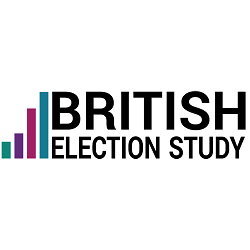The British Election Study is pleased to announce the release of wave 14 of the British Election Study Internet Panel. Wave 14 was conducted in May 2018, after the local election. In total 31,063 respondents took wave 14 of the British Election Study. 20,393 of these also took wave 13, an overall wave on wave retention rate of 65.5%. 4,191 respondents took all of the first 14 waves of the survey, 13.9% of respondents who originally took wave 1. The combined wave 1-14 internet panel data can be downloaded here, the combined open ended response data can be downloaded here, and the wave 14 only data here.
Alongside the new wave we are also making two updates to our previously released data.
Most Important Issue Coding
We are happy to announce that we have now included manual coding of the most important issue open-ended responses for waves 1-13. This process involves a computer assisted coding approach through the codething platform. The software makes recommendations about the most likely categories that responses fall into, but a human coder selects and verifies every entry. In total, 355,000 open-ended responses were coded into categories. The relevant variables can be found with the stems mii_cat and
small_mii_cat. These replace the automated codings with the miilabel, which will be phased out in future data releases. As with previous releases, we strongly recommend that users verify that the open-ended responses match their interpretation of a category, especially when relying on smaller categories in the data.
Correcting an error in NS-SEC coding
In the course of data checks for the latest wave of data we discovered a coding error in the NS-SEC variables used to measure occupational class in the British Election Study Internet Panel in waves 1-9. This error does not affect the British Election Study face-to-face data. NS-SEC is calculated through coding a SOC2010 code that describes an individual’s job on the basis of open-ended responses. This code is then cross-referenced with their occupational status (whether they are a small employer, large employer, self-employed, manager at a large firm, manager at a small firm, supervisor or employee) to derive an NS-SEC code and NS-SEC analytic code. The coding error inadvertently meant that the lookup table reversed the columns of small and large employers. This means that some people in the small employer category (not including self-employed) were included as large employers and vice-versa. Because these constitute a small percentage of the overall sample (1%) they were not detected in our original random checks. The updated versions of the data contain the new versions of the two variables for the two time periods. The difference between the original and revised NS-SEC analytic codes are shown in the following tables:
| Waves 1-5 | ||||||||
| New coding | ||||||||
| Old coding | 1.1 | 1.2 | 2 | 3 | 4 | 5 | 6 | 7 |
| 1.1 | 1,188 | 0 | 46 | 0 | 434 | 0 | 0 | 0 |
| 1.2 | 0 | 4,438 | 0 | 0 | 0 | 0 | 0 | 0 |
| 2 | 4 | 0 | 11,033 | 0 | 0 | 0 | 0 | 0 |
| 3 | 0 | 0 | 0 | 7,122 | 0 | 0 | 0 | 0 |
| 4 | 34 | 0 | 0 | 0 | 2,355 | 0 | 0 | 0 |
| 5 | 0 | 0 | 0 | 0 | 0 | 2,361 | 0 | 0 |
| 6 | 0 | 0 | 0 | 0 | 0 | 0 | 3,593 | 0 |
| 7 | 0 | 0 | 0 | 0 | 0 | 0 | 0 | 2,013 |
| Waves 6-9 | ||||||||
| New coding | ||||||||
| Old coding | 1.1 | 1.2 | 2 | 3 | 4 | 5 | 6 | 7 |
| 1.1 | 1,439 | 0 | 10 | 0 | 127 | 0 | 0 | 0 |
| 1.2 | 0 | 4,939 | 0 | 0 | 0 | 0 | 0 | 0 |
| 2 | 2 | 0 | 11,427 | 0 | 0 | 0 | 0 | 0 |
| 3 | 0 | 0 | 0 | 8,014 | 0 | 0 | 0 | 0 |
| 4 | 16 | 0 | 0 | 0 | 2,676 | 0 | 0 | 0 |
| 5 | 0 | 0 | 0 | 0 | 0 | 2,144 | 0 | 0 |
| 6 | 0 | 0 | 0 | 0 | 0 | 0 | 3,907 | 0 |
| 7 | 0 | 0 | 0 | 0 | 0 | 0 | 0 | 2,085 |
Key
1.1 Employers in large organisations and higher managerial
1.2 Higher professional occupations
2 Lower professional and managerial and higher supervisory
3 Intermediate occupations
4 Employers in small organisations and own account workers
5 Lower supervisory and technical occupations
6 Semi-routine occupations
7 Routine occupations
This should generally not affect analysis at the NS-SEC analytic level, because these changes only affect a small proportion of the large employers/managers and small employers/own account workers. However, analyses separately analyzing responses at the NS-SEC full code level that specifically focus on large and small employers could potentially be affected. We apologise for the error and have instituted further checks to make sure that this cannot reoccur. We are in the process of updating our data management approach to deal with the complexity of managing 14 waves and large amounts of linked data and will continue to make improvements to the datasets.

